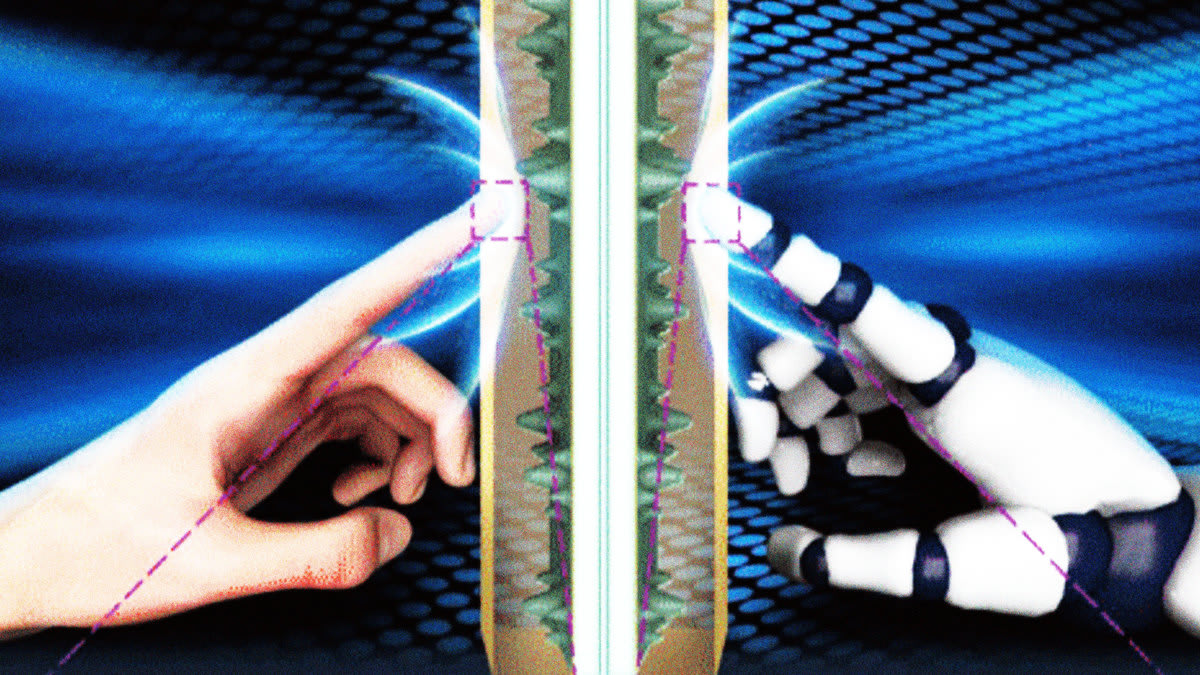Human fingers are incredibly sensitive. In fact, they can pick up subtle textures and materials as small as 13 nanometers—tens of thousands of times tinier than a human hair. This means that if your finger was the size of the Earth, you would be able to tell the difference between buildings and cars by touch alone.
As amazing as our fingers are at picking up on minute details, they can only go so far. They can’t, for example, tell you exactly what is inside of something. But with a little bit of innovative engineering, they might one day be able to.
“Tactile perception is one of the most important functions for humans,” Zhiming Chen, a bioengineer at Wuyi University in China, told The Daily Beast. “The research of tactile sensors that stimulate humans can boost the development of electronic skin, human-machine interface, and bionic robots.”
Chen helped co-author a study published on Feb. 15 in the journal Cell Reports Physical Science that developed a bionic finger that can see through objects and surfaces through touch. The device scans an object by poking across the surface and using sensors to create a 3D map of what it touched.
The authors said that the device could one day be incorporated in bionic robots. These bots could help assist doctors in medical imaging or even to diagnose issues with industrial or personal electronics without having to open up its casing.
The bionic finger itself is made out of a carbon fiber bundle that transmits data to a computer. To test it, the authors used the device to map out the internal and external data of different objects like a rigid letter A placed underneath a silicone layer. As the device poked and prodded at the object, the data was gathered and sent to the computer where the letter A appeared on screen as a 3D image.
“Each time the object is touched, the carbon fiber bundle is compressed and the degree of compression provides information about the relative softness of the object,” Chen explained. “Depending on the material properties of the object, when pressed by this bionic finger, hard objects retain their shape while soft objects deform when sufficient pressure is applied.”
The researchers were also able to test the bionic finger’s ability to see through simulated human skin. This included faux bones made of a hard polymer, a muscle layer made of silicone, and simulated blood vessels. The device was able to create a 3D image of the fake tissue and even find the vessels underneath. Additionally, the team tested the bionic finger on a broken electronic device, using it to zero in on where a circuit was disconnected and even find a mis-drilled hole.
“This tactile technology opens up a non-optical way for the nondestructive testing of the human body and flexible electronics,” Jianyi Luo, a materials engineer at Wuyi University and senior author of the study, said in a statement. He added that the team planned on refining the bionic finger to be able to move omnidirectionally while sensing what’s underneath certain surfaces.
Overall, the device has the potential to provide a minimally invasive way for medical imaging. No more worrying about X-rays or cumbersome ultrasounds. One day, all it’ll take to look inside the human body might be a few pokes and prod by your robo-doctor.

Got a tip? Send it to The Daily Beast here.
This post originally appeared on and written by:
Tony Ho Tran
The Daily Beast 2023-02-15 16:59:00

